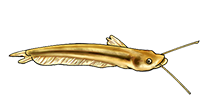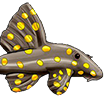https://doi.org/10.1038/s41598-025-94272-y
https://www.nature.com/articles/s41598-025-94272-y
Keywords Catfish, Mitogenome, Phylogenetics, Evolution, Gigantism, AmazonAbstract
The order Siluriformes (catfish) is one of the largest groups of fish. Diversity in the body size among its species, which range from a few centimeters to 4 meters, makes Siluriformes an interesting group to investigate the body size evolution. Here, we present the complete mitogenome of Brachyplatystoma filamentosum (Piraíba), the largest Amazonian catfish, to explore the evolutionary history of Siluriformes and their body size dynamics. The Piraíba’s mtDNA is 16,566 bp long, with a GC content of 42.21% and a D-loop of 911 bp. Phylogenetic analysis was conducted using protein-coding sequences, tRNAs, and rRNAs from mtDNA of Piraíba and 137 other Siluriformes species. Time-calibrated maximum likelihood trees estimated the origin of the order Siluriformes to be ~118.4 Ma, with the Loricarioidei suborder diversifying first, followed by Diplomystoidei and Siluroidei. The Siluroidei suborder experienced rapid expansion around 94.1 Ma. Evolutionary dynamics revealed 16 positive and 11 negative directional body size changes in Siluriformes, with no global trend toward larger or smaller sizes, and with Piraíba showing a significant size increase (5.65 times over 40.8 Ma). We discuss how biological, ecological and environmental factors could have shaped the evolution of body size in this group.




